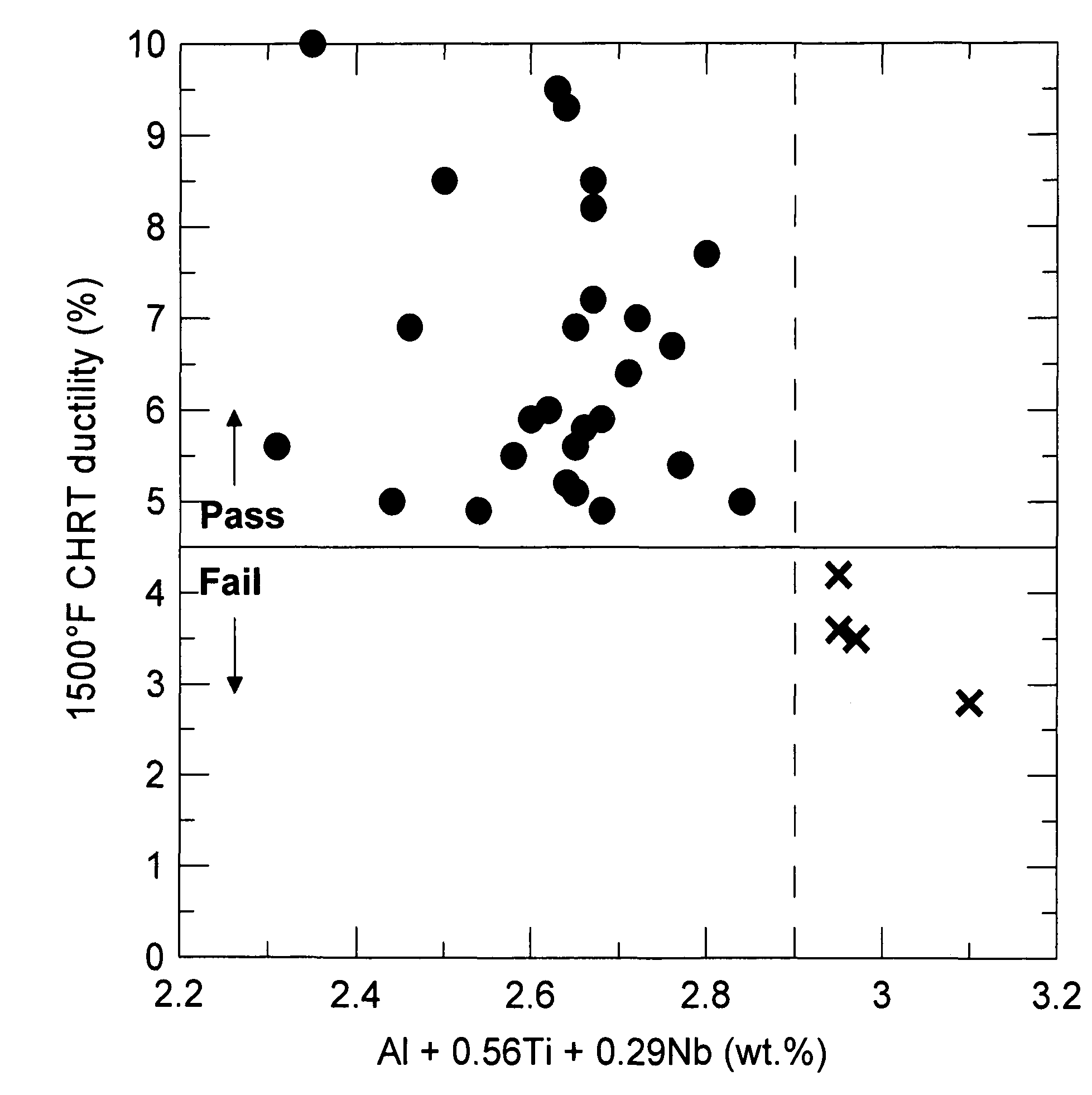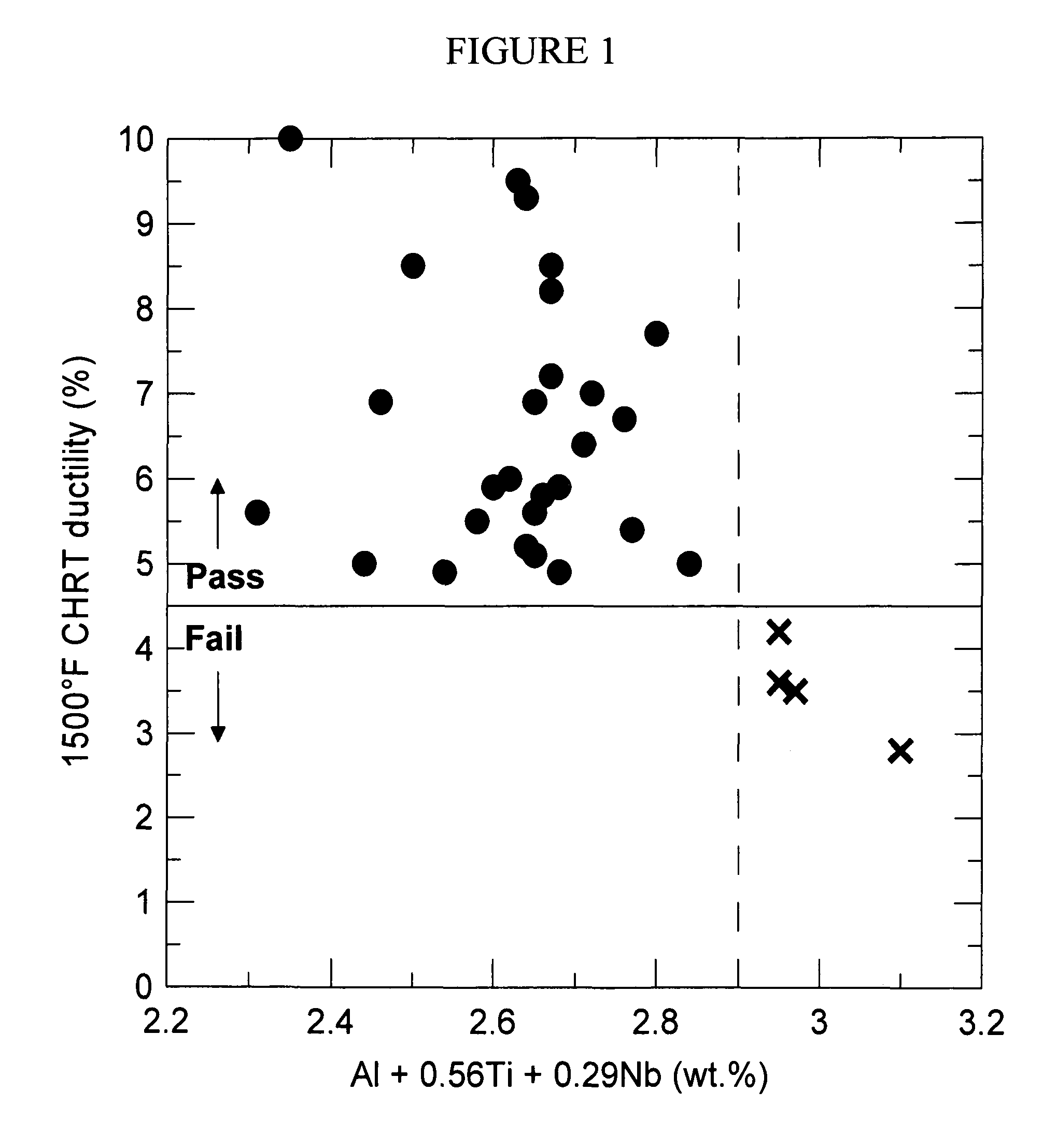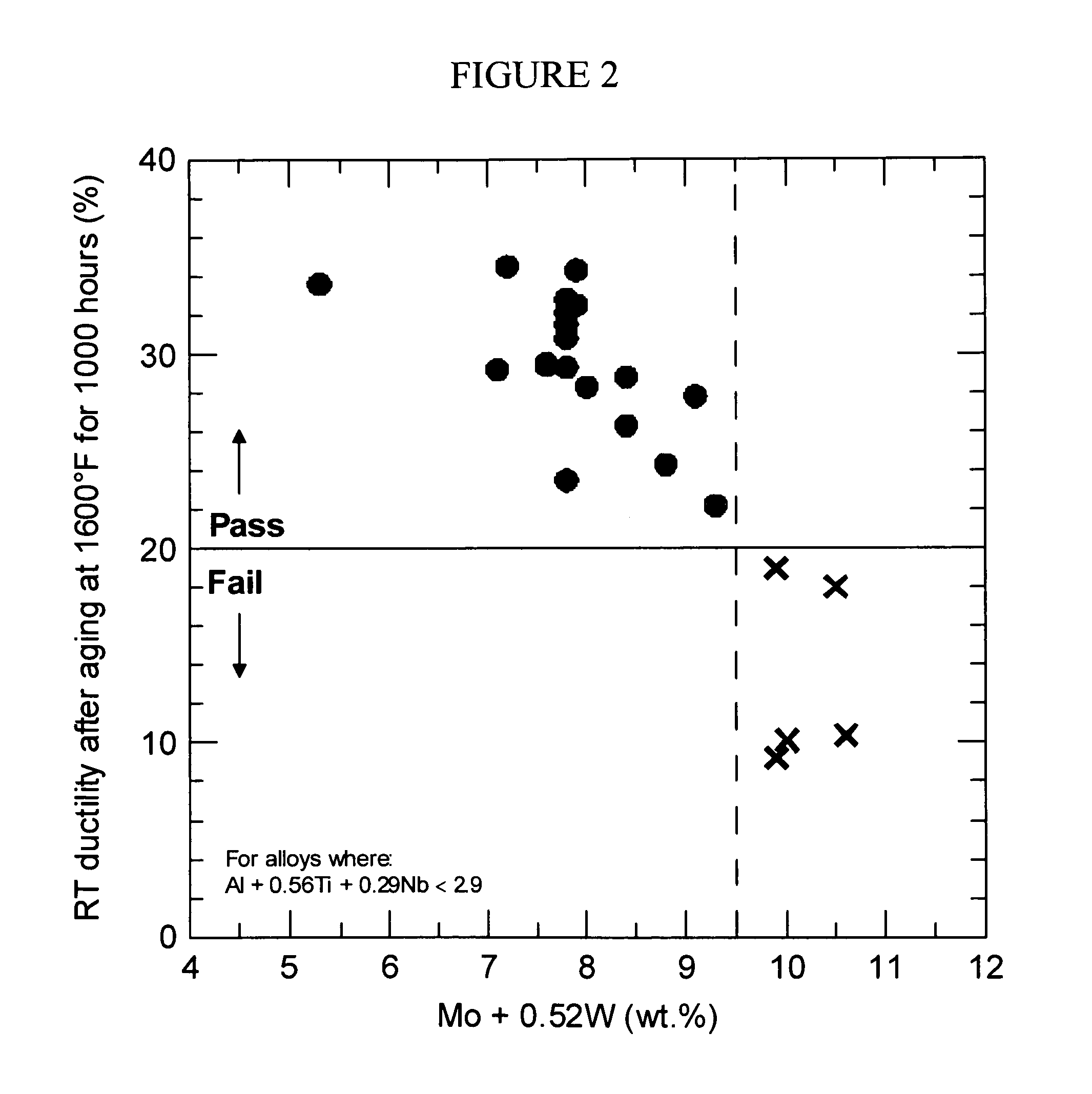Ni-Cr-Co alloy for advanced gas turbine engines
a gas turbine engine and alloy technology, applied in the field of wroughtable high strength alloys, can solve the problems of many wrought gamma-prime reinforced alloys being susceptible to strain age cracking, limited material properties in the ability to increase operating temperatures, and not having the strength or stability to be used, etc., to achieve good creep-rupture strength and good thermal stability
- Summary
- Abstract
- Description
- Claims
- Application Information
AI Technical Summary
Benefits of technology
Problems solved by technology
Method used
Image
Examples
Embodiment Construction
[0019]The wrought age-hardenable nickel-chromium-cobalt based alloys described here have sufficient creep strength, thermal stability, and resistance to strain age cracking to allow for service in sheet or plate form in gas turbine transition ducts as well as in other product forms and other demanding gas turbine applications. This combination of critical properties is achieved through control of several critical elements each with certain functions. The presence of gamma-prime forming elements such as aluminum, titanium, and niobium contribute significantly to the high creep-rupture strength through the formation of the gamma-prime phase during the age-hardening process. However, the combined amount of aluminum, titanium, and niobium must be carefully controlled to allow for good resistance to strain age cracking. Furthermore, the ration of titanium to aluminum must be controlled to favor formation of gamma prime over eta phase because eta phase causes embrittlement. Molybdenum and...
PUM
| Property | Measurement | Unit |
|---|---|---|
| weight percent | aaaaa | aaaaa |
| weight percent | aaaaa | aaaaa |
| weight percent | aaaaa | aaaaa |
Abstract
Description
Claims
Application Information
 Login to View More
Login to View More - R&D
- Intellectual Property
- Life Sciences
- Materials
- Tech Scout
- Unparalleled Data Quality
- Higher Quality Content
- 60% Fewer Hallucinations
Browse by: Latest US Patents, China's latest patents, Technical Efficacy Thesaurus, Application Domain, Technology Topic, Popular Technical Reports.
© 2025 PatSnap. All rights reserved.Legal|Privacy policy|Modern Slavery Act Transparency Statement|Sitemap|About US| Contact US: help@patsnap.com



